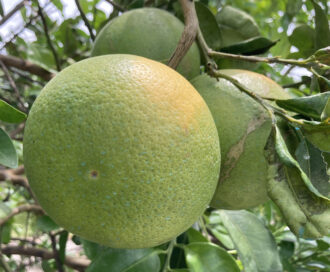FORT PIERCE, Florida – Maintaining optimum tree health has become the top management strategy for Florida citrus growers in combating citrus greening, and University of Florida researchers are working to hone in on a tree’s nutrient needs for more timely and targeted fertilizer applications.
Lorenzo Rossi, a plant root biologist with University of Florida Indian River Research and Education Center, received a $20,000 Southern Sustainable Agriculture Research and Education (SSARE) On-Farm Research Grant to fine tune fertilization processes in grapefruit and mandarin using leaf sap analysis as a complementary tool for more traditional soil and leaf tissue testing.
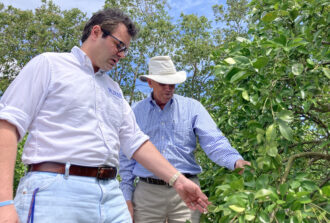
“Leaf sap analysis is analogous to a blood test that gives us a real-time nutritional status at any time of the season to immediately correct any nutrient deficiency or excess,” said Rossi. “The issue with traditional leaf tissue analysis is that it only gives the grower a picture of the plant’s nutrient status at a specific point in time, and when the health of a tree can turn on a dime with citrus greening, getting a more accurate, consistent test in place is very important. With leaf sap analysis, you don’t have a picture, you get a movie.”
Leaf sap analysis, which measures the nutrient concentration in the plant’s fluids from the xylem and phloem in the leaf petiole, has been useful in managing fertilizer needs in a variety of other crops, such as tomatoes, potatoes, strawberries, sugarcane and olives. The method, however, has not been used in citrus.
Rossi is partnering with citrus grower Cody Estes on the project. Estes, who owns 1,500 acres of citrus in Vero Beach, FL says the goal is to find a way to respond to a tree’s nutrient needs so quickly that it can overcome the disease issues associated with citrus greening.
“By the time we see a problem, it may be too late. Plant sap analysis provides more options for nutrient applications than we have had in the past,” said Estes. “A healthy tree will still be a productive tree, even in the face of the disease.”
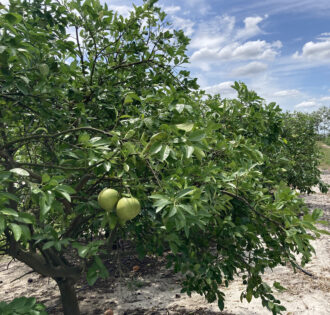
Citrus greening, also known as Huanglongbing (HLB), has been devastating for the citrus industry in Florida. A bacterium spread by the Asian citrus psyllid, the disease causes trees to produce fruits that are green, misshapen and unmarketable. Researchers have yet to find a way to manage both the insect and the bacteria inside the trees, and once a tree is infected with the bacterium there is no cure.
“Citrus greening is so prolific in Florida citrus that it’s not a matter of if trees will be infected, but when,” said Rossi, who’s seen the fresh market for grapefruit in the Indian River area shrink from over 55 million boxes several years ago to just 1.7 million this year.
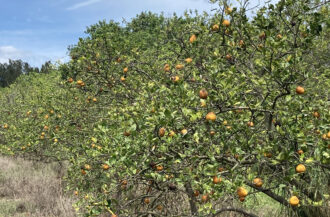
Citrus growers, defeated, are pulling out of the industry – ripping out their trees and putting their land into cattle production, shifting to vegetables, or selling their property altogether for development. Those growers who remain steadfast are hopeful that they can keep their trees going long enough until a cure is eventually found.
“Our work fits in with what we need to do to continue to be sustainable and be good stewards,” said Estes. “There’s still a consumer demand for our products, and citrus is a good neighbor. Better than a rooftop.”
In the SARE-funded project, Rossi is comparing a range of nutrients (N, P, K, Ca, Mg, S, B, Cu, Fe, Mn, and Zn) between the plant sap analysis and the standard leaf tissue analysis during a season to understand how each nutrient changes over time and identify possible causes of nutrient imbalances. The goal is to establish more accurate fertilizer guidelines.
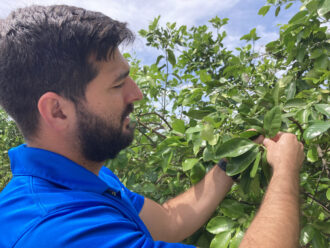
Rossi said that by conducting such tests, growers can be more efficient in their fertilizer applications, and more profitable.
“Fertilizer prices, in some cases, have doubled. So the grower is saving money with a more targeted approach,” said Rossi. “Being more efficient with fertilizer applications is also easier on the tree. Fifty years ago a tree could tolerate pushing fertilizer beyond the root zone. Not true today.”
An added value of leaf sap testing is the possibility to monitor total sugars and brix in the plant (even before the fruit set), which can become an extra tool for growers to predict and improve internal fruit quality.
